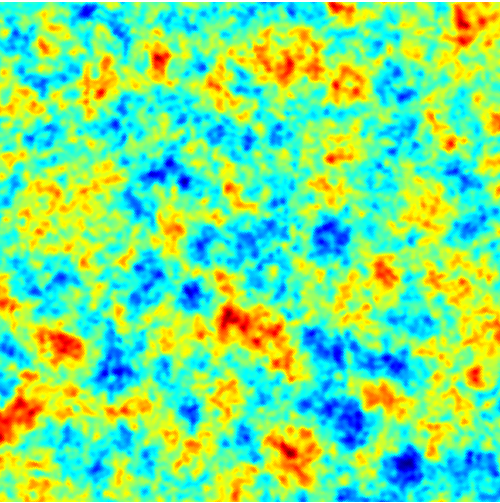This guest blog post was written by Stephen Feeney.
Neutrinos are puzzling little particles. The Standard Model of particle physics tells us that there are three different types, or “flavours”, of neutrinos, each of which has no mass. Particle physics experiments, however, tell a different story. Firstly, the fact that neutrinos produced in the Sun (and nuclear reactors) are observed to oscillate between flavours requires them to have mass. Furthermore, unexpected results corroborated by a number of experiments measuring the rate of oscillations hint at the existence of more than three neutrino flavours.
This is all very interesting, and it seems that the Standard Model is ripe for revision, but what has it got to do with cosmology? Quite a lot, as it happens! Neutrinos, along with all fundamental particles, are produced in the early Universe. As they are so light, the neutrinos are extremely relativistic, and hence very energetic: so much so that, along with the photons, they dominate the dynamics of the early Universe. If there are four neutrinos rather than the standard three, the Universe initially expands more quickly than the current cosmological model (LambdaCDM) predicts, and cold dark matter becomes important at later times. Furthermore, neutrinos are so energetic that they are able to escape from the density perturbations set up in the early Universe — they “free-stream” a certain distance which is dependent on their mass — and hence affect the amount of structure that forms.
All of this has observable consequences for cosmology, affecting the relative amounts of simple elements produced in the Universe’s first few minutes, the amplitude and scale of the oscillations in the cosmic microwave background (CMB), and the numbers of, for example, galaxy clusters. We can therefore try to determine the number of neutrino species and their masses from cosmology! In fact, the strength of the effects of neutrinos in the early Universe, coupled with the quality of cosmological data, means that cosmological tests of neutrino physics are more powerful than laboratory experiments.
That’s what we (Hiranya, Licia Verde and I) have been doing. People have, of course, already started looking for hints of non-standard neutrinos in cosmology, and have found weak indications that the most likely number of neutrino species is greater than three. These analyses have, however, relied on parameter estimates: finding the most likely number of neutrino species given the data, and claiming evidence of new physics if this is not the standard value.
What we really want to do is to determine the support for a model with, for example, extra neutrinos, and compare this to the support for the standard cosmological model. This is what we’ve done: we have used the Bayesian evidence to compare the relative probabilities of LambdaCDM and models with extra neutrino flavours and massive neutrinos, given cosmological data. The datasets we consider include CMB power spectra from WMAP and the South Pole Telescope, measurements of the Universe’s recent expansion, and measurements of the weak gravitational lensing of the CMB by intervening large-scale structure. Our model-selection results indicate that the standard cosmological model is favoured over models with additional neutrinos and/or neutrino mass. There is therefore no requirement from cosmology to change our view of the neutrino. We’re going to need better cosmological data — such as the Planck data coming in a couple of months’ time — to make progress on this problem.

The lensing of the CMB by intervening matter: a promising cosmological probe of neutrino properties.
You can read more here:
Stephen M. Feeney, Hiranya V. Peiris and Licia Verde
Is there evidence for additional neutrino species from cosmology? JCAP, submitted, 2013.
